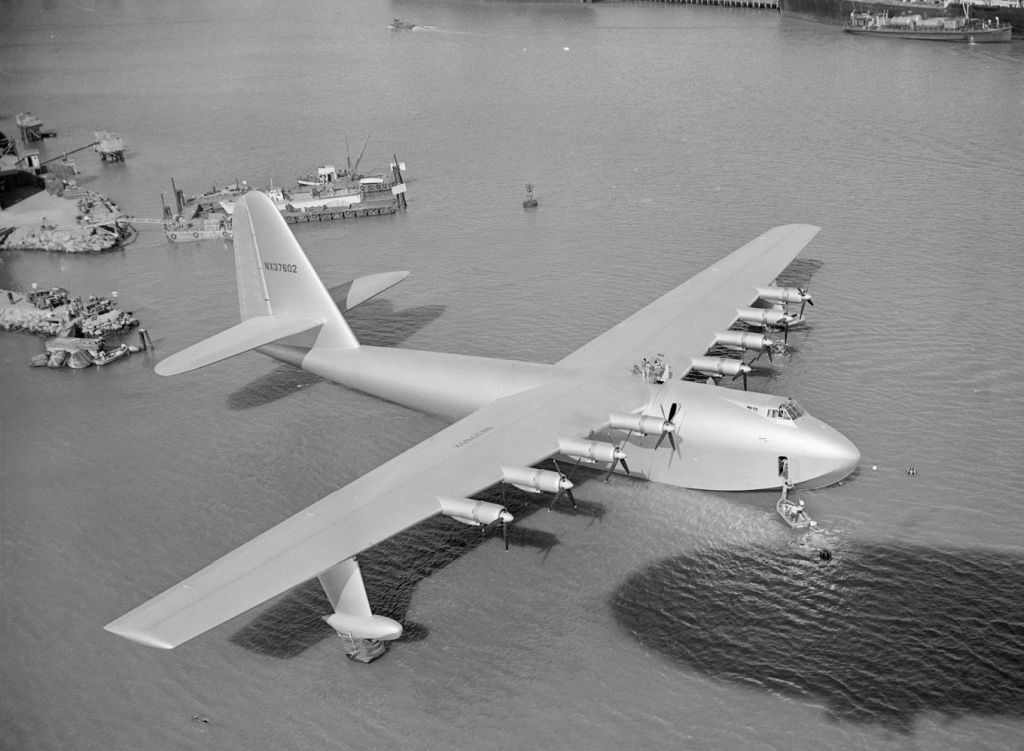Advancing the field of NDT

Roger Engelbart, American Society for Nondestructive Testing (ASNT) director at large, examines the non-destructive testing (NDT) and certification in aerospace composites manufacturing.
Early aerospace composites fabrication began with a concept aircraft designated the H-4 Hercules, also known as the ‘Spruce Goose’ for its birch wood construction. The aircraft was conceived during World War II as a large-capacity transport for transatlantic flight, at a time when ship losses to submarines were very high. Critically important resources including aluminium and steel were dedicated to the war effort, therefore materials for building experimental aircraft were scarce.
With the exception of the engine and instrument panel, the Spruce Goose was fabricated entirely out of wood using layers of thin birch veneer bonded together with a urea formaldehyde adhesive. The 160ft long wingspan was built up with 150 wafer-thin layers of birch. This was done by laminating birch in multiple strategically positioned grain directions, improving its handling of bolting stresses. Overall, the use of birch allowed weight reduction and the ability for the structure to withstand the high stress of flight. This process was the forerunner of ply-by-ply lay-up and orientation in composites manufacturing.
A material whirl
Composite materials are utilised in a variety of platforms including commercial aircraft, rotorcraft, and space vehicles. Composites generally offer equivalent mechanical properties with weight reduction over metals, in addition to useful dielectric characteristics, and mitigation of corrosion concerns. Carbon/epoxy, in particular, offers strength and stiffness with decreased weight in comparison to metals and is used in primary structures such as wings and stabilisers, flaps and ailerons, as well as some fuselage applications.

The desire for efficiency and fuel economy in flight drives the need to continually seek ways to reduce weight while maintaining structural integrity. In addition, aircraft manufacturers are interested in reducing overall manufacturing costs. This has led to the development and use of processes that can lay down larger quantities of composite material at a faster rate than the traditional hand lay-up process. These factors point to the need for effective and reliable means of determining the quality of finished composite parts.
Non-destructive testing (NDT) is critical to safety and reliability in the aerospace industry and is vital to verifying the quality and structural integrity of composite structures. Collectively, NDT is a group of testing methods designed to acquire information about parts and structures without causing damage or rendering them unfit for use.
A number of NDT methods are employed to ensure the quality of composite structures, but the primary method across the aerospace industry is ultrasonic testing. This method involves the introduction of high-frequency sound into the part. It is particularly sensitive to discontinuities such as porosity and delamination. The desire for reduced manufacturing costs also means a desire for greater speed and reliability in NDT. Ultrasonic testing systems have become highly automated with faster scan rates and sophisticated data acquisition software packages. With increased automation, comes a need for increased training and certification.
Personnel proficiency in NDT methods is managed through certification programmes comprised of written and practical examinations that demonstrate both mastery of the technical information and hands-on capability. There are three levels of certification; eligibility to test at each level is based on hours of formal training in the method and hours of experience in practical application of the method.
Within the aerospace industry, many manufacturers conduct their own employer-based certifications. This is due to the proprietary nature of the materials, requirements, specifications, and applications that are used in their products. There are, however, third party organisations that can provide aerospace companies updated recommendations on certification structure and emerging NDT methods.
Knowledge is power
One of the leading organisations is the American Society for Nondestructive Testing (ASNT), whose mission is to advance the field of non-destructive testing. ASNT offers certification programmes to all industry sectors, including ASNT Level III and the ISO-compliant ASNT9712.
The benefit of engaging third party organisations, like ASNT, is access to work compiled by industry experts. For example, the ASNT Aerospace Committee has spearheaded the development of the Aerospace NDT Handbook. The Committee influences other publications and NDT Handbooks by contributing aerospace-specific information and applications. ASNT has sponsored topical conferences that are focused on aerospace applications, as well as tracks at its Annual Conference and Research Symposium. The Society also actively participates in internationally sponsored webinars and panel discussions that address current topics and issues within the industry.
NDT is critical to space and aviation safety. Many companies develop proprietary composite materials and specialised NDT inspection for those materials. In the end, however, accessing a community of NDT experts can provide benefits to the aerospace industry’s NDT method development and certification standards for composite materials and other integral aerospace components. As materials and manufacturing technology within the industry evolve, the importance of continual inspections and verification of structural integrity never changes.












